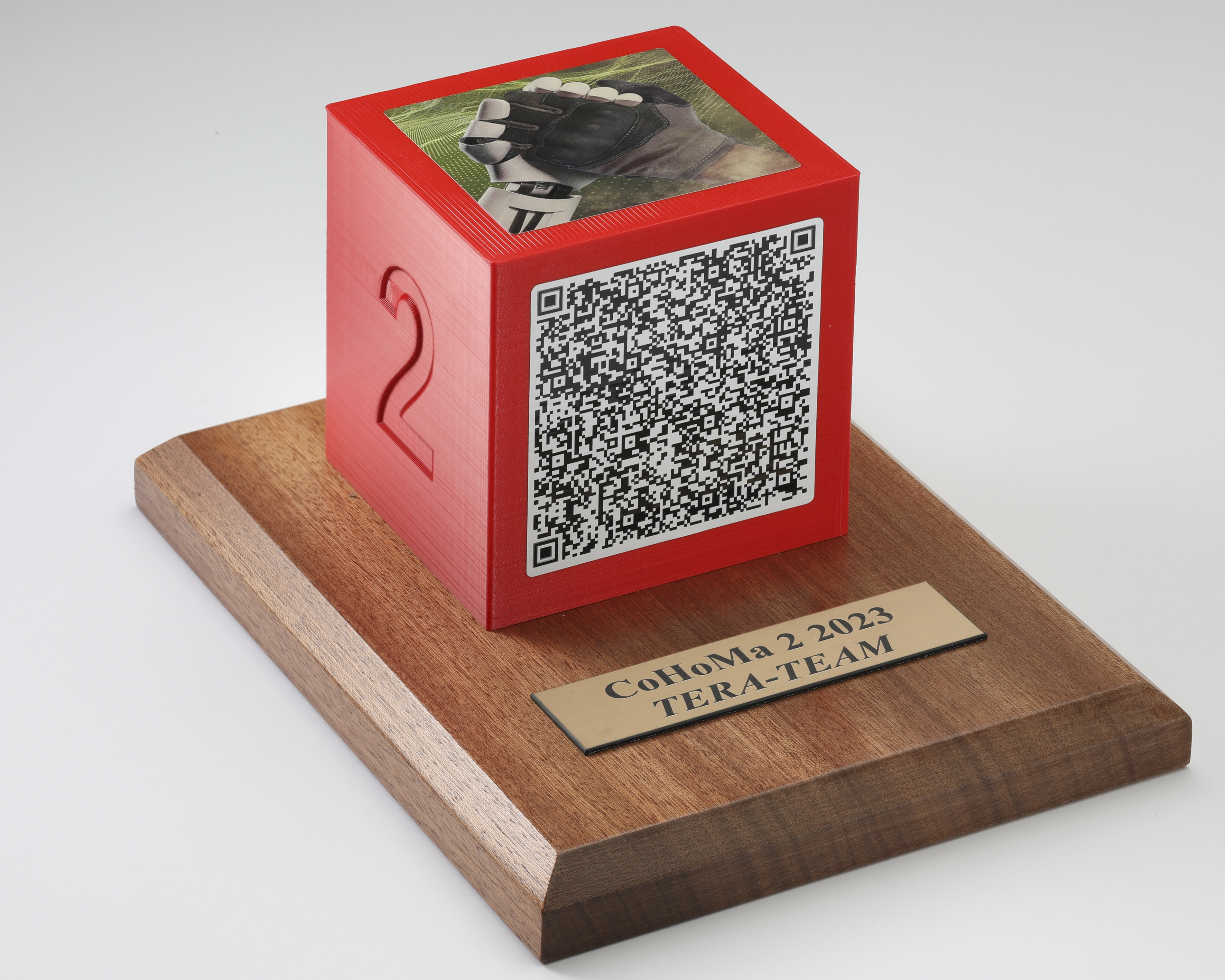[28/07/2023]
For its first participation in the CoHoMa II robotics challenge (CoHoMa stands for Collaboration Homme-Machine = Man-Machine Teaming), ISL , which brought together Exail, FN Herstal and Soframe, took second place.
Competition in a highly hostile environment
The mission prepared by Battle Lab Terre for this second edition of CoHoMa was for robots to take over a point in a highly hostile environment, with various optical and physical obstacles, with fixed and mobile enemies and with a demanding topography in terms of radio communications disturbances (although no jamming of communications or GNSS has been implemented yet). The team had to consist of at least 2 unmanned ground vehicles (UGVs) and 2 drones (UAVs), which had to work together.
ISL’s UGV comprised its AUROCHS highly agile and fast 4-wheeled electric platform, a suite of low-cost sensors selected and integrated by ISL and ISL’s rapidly expanding STAMINA suite of on-board intelligence functions. It was also equipped with a stabilised remote weapon station, fully integrated with the rest of the system, both mechanically as well as in terms of interfacing its sight system.

Development of new ISL functions of on-board intelligence for UGV
The CoHoMa II scenario did not involve the adjusted autonomy functions, which ISL has made a speciality of. It was more a question of teleoperation in and out of sight. ISL developed specific ADAS (advanced driver-assistance system) functions, leveraged augmented reality and designed specific tactical situations, with a view to enhance user experience for robot teleoperation. These developments enabled the user to “feel” in a first person perspective and provided also different perspectives for a seamless, confusion-free and simple use of on-board sensors and for easy handover between teleoperators. A high priority has been given to avoiding tunnel vision focused on the UGV’s control unit, to reducing the operator’s cognitive workload and to enabling him continue to be fully aware of its physical and tactical environment.
The ISL’s UGV deployed in CoHoMa II proved highly versatile and consistently outperformed other UGVs in competition.
Innovative and polyvalent driver assistance systems
These ADAS have thus proved great additions to the portfolio of on-board intelligence functions that ISL is constantly improving. These functions comprise movement and gesture-based teleoperation, obstacle avoidance, automatic piloting in convoy with a gap on demand between vehicles and automatic reconfiguration, autonomous navigation in an unstructured, GNSS-denied environment with communications disruptions (travel to pre-determined waypoints, lane-following techniques, trajectory replay including behaviour when faced to a new obstacle, etc.). This includes fall-back modes, transition between modes and straightforward, intuitive interaction with the users. With a Meaningful Human Control when it comes to the use of weapons.
ISL on-board artificial intelligence systems well appropriated by users
ISL benefits from constant feedback from operational users and leverages its know-how in military mission-adapted signal processing for low-cost sensors, be them optronics or acoustics, and in guidance, navigation & control. For example, ISL investigates the detection, localisation and classification of specific threats, including adverse UAVs, with small, low-cost MEMS acoustic arrays and deep learning algorithms (ANR-funded project DEEPLOMATICS), explores the potential of neuromorphic event-based cameras or develops signal processing for breakthrough tiny, low-cost SPAD [Single Photon Avalanche Diode] sensors that may lead to a sort of “skin-vision” (Project SESTOSENSO funded by European Commission’s HORIZON EUROPE Research and Innovation Actions).
Altogether, ISL designs high-level cognitive skills and system’s behaviours for game-changing collaborative robots that develop user acceptance and ownership, with a view to protecting soldiers’ lives in an effective, efficient and agile manner.






